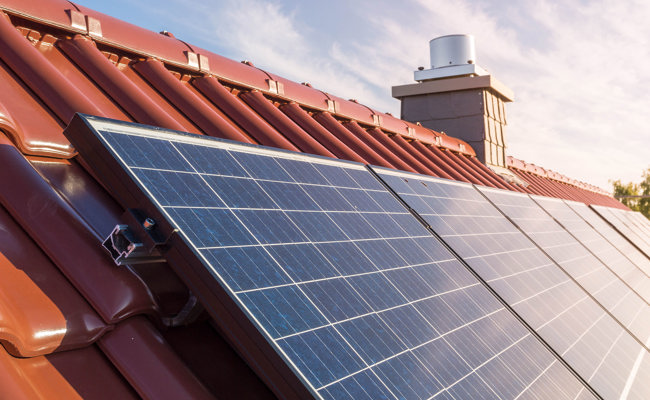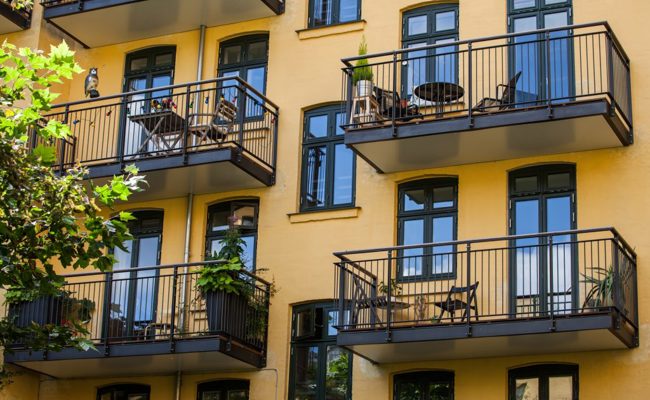Four steps to increased energy efficiency in your properties
Energy efficiency in buildings is a necessary part of the equation to ensure long-term sustainability. By following a structured process, property owners can not only reduce energy costs but also enhance the value and comfort of their properties.
Contact us
Below, we explain how the renovation process is structured to optimize energy efficiency in your property portfolio in the best possible way.
Step 1: Mapping the property portfolio and energy efficiency
To optimize energy use in your properties, we start the process with a comprehensive mapping of your entire property portfolio. By collecting official data from various authorities, we create an analysis of your portfolio and identify inefficient buildings with energy ratings of E, F, and G.
The model allows you to easily filter and sort properties based on different key factors and visually organize them geographically in a way that best suits your organization.
Advantages of the process:
- Identifies your entire portfolio and ensures a holistic approach through physical inspections and controls.
- Creates a clear roadmap for you and identifies necessary actions and financial investments using the Good, Better, Best method.
- Directs efforts toward reduced consumption, thereby lowering carbon emissions.
- Helps prioritize measures to meet EU energy requirements.
Step 2: Analysis / Energy analysis
After visualizing your portfolio, we complement the data with additional information by analyzing the energy performance of the entire portfolio.
A comprehensive physical energy analysis is conducted to assess actual conditions, ensuring recommendations are based on both digital models and real-world inspections.
Advantages of the analysis:
- The analysis provides renovation proposals based on Fasadgruppen’s Good, Better, Best model.
- It prioritizes properties that require action to comply with EU directives.
Identifies hidden savings potential, revealing the most cost-effective - buildings for energy renovations.
- Reduces financial risk by increasing insight into strengths and weaknesses across your property portfolio.
- Evaluates previous improvements to enable large-scale efficiency measures.
After thoroughly reviewing your portfolio, you will have a clear overview and a prioritized list of properties for further action. The goal is to identify the most profitable investments, ensuring the highest return per invested unit over time.
We have likely selected the properties that the analysis identified as the most profitable for energy renovation or those "brown" buildings that you have chosen to revitalize with the goal of increasing their energy rating. By working systematically, you gradually move your portfolio toward achieving the goals of the EPBD (Energy Performance of Buildings Directive).
Step 3: Implementation of energy efficiency measures
When the property portfolio has been analyzed, the next step is to implement the identified measures.
We provide support for everything from specific interventions to full-scale renovation projects across the Nordic region and the UK.
Examples of specific measures include window replacements or additional insulation, aligning with your maintenance plan. Often, a combination of measures at the same time maximizes the return on investment.
We base our renovation approach on our Good, Better, Best methodology, where we assess the best solutions for each property and provide three different renovation levels with financial calculations for each option.
For multi-family buildings constructed before 1980, which often suffer from poor thermal envelopes and radon issues, we offer our patented SmartFront method as an effective solution.
SmartFront method includes:
- Energy-efficient windows and a new thermal envelope
- Improved indoor comfort through FTX ventilation with heat recovery
- Reduced energy consumption by up to 80%
This method can also enable access to green loans. More about the SmartFront method can be found here: https://smartfront.se
Step 4: Follow-up and post-renovation evaluation
By conducting follow-up and post-renovation assessments, we ensure that your energy renovation delivers maximum benefits—both financially and environmentally—while maintaining high energy performance standards in the property.
Follow-up and post-renovation evaluation are crucial after an energy renovation for several reasons:
- Verification of results
- Adjustments and optimization
- Financial tracking
- Extended lifespan and maintenance
Summary
By following this step-by-step process, property owners can effectively improve the energy efficiency of their buildings. By starting with a property portfolio mapping, analyzing heating performance, implementing measures, and finally conducting follow-ups, we create the foundation for sustainable and energy-efficient properties.

What is energy renovation?
Energy renovation involves upgrading a building to reduce its energy consumption, which lowers costs and makes the property more environmentally friendly.
Read more about energy renovationReasons to renovate for energy efficiency
Energy renovation is a powerful way to extend a building’s lifespan, increase its value, and contribute to a more sustainable society.
The impact of energy renovation
Contact us
Let us help you with your energy renovation
Tell us who you are, and we will get back to you!

Stefan Forsberg
Product Manager SmartFront / Sales Fasadgruppen
